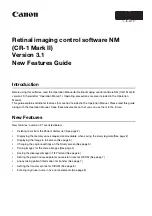
27
with Gina. Without such synchronization, the individual pieces of
equipment will act independently of each other. This scenario may be fine
for some musical applications; however, it is not appropriate for situations
where sample-accurate synchronization is required.
For this reason, Gina supports S/PDIF synchronization mode. Gina can
slave to S/PDIF or generate a S/PDIF synchronization signal.
Let’s take a brief look at this synchronization.
S/PDIF
– The Sony/Philips Digital Interchange Format is a serial bit-
stream that has a clock signal embedded in the data stream. When recording
from a S/PDIF source, Gina will utilize the synchronization clock that is
embedded in the S/PDIF while it decodes the bitstream.
Note:
When recording from an S/PDIF port, you must select S/PDIF as the
input clock. For greater flexibility, this is not done automatically. If you
find that your S/PDIF recordings contain pops or skips, be sure that you
have selected S/PDIF as your input clock.
Now let’s take a look at some possible configurations and how you might
set them up from a synchronization standpoint.
Let’s start simple. Suppose that Gina is the only audio device used in your
system. Since you have no other devices to synchronize with, simply select
“Internal” for Gina’s input clock. Gina will then use its own clock to
control its operation.
Now a little more complicated set-up: You have two Ginas connected.
Simply set Gina #1 to “Internal” for its input clock. Now connect the first
Gina to the second one via a 75 ohm RCA cable running from S/PDIF Out
on Gina #1 to S/PDIF In on Gina #2. Now select S/PDIF for Gina #2’s
input synch. Your Ginas will now operate in unison.
No matter how many devices you are synchronizing, the concept is
essentially the same. You are merely “daisy-chaining” devices together
using compatible clocks. One device will operate as the source of the
master clock, with each successive device using that clock to sync.
















































